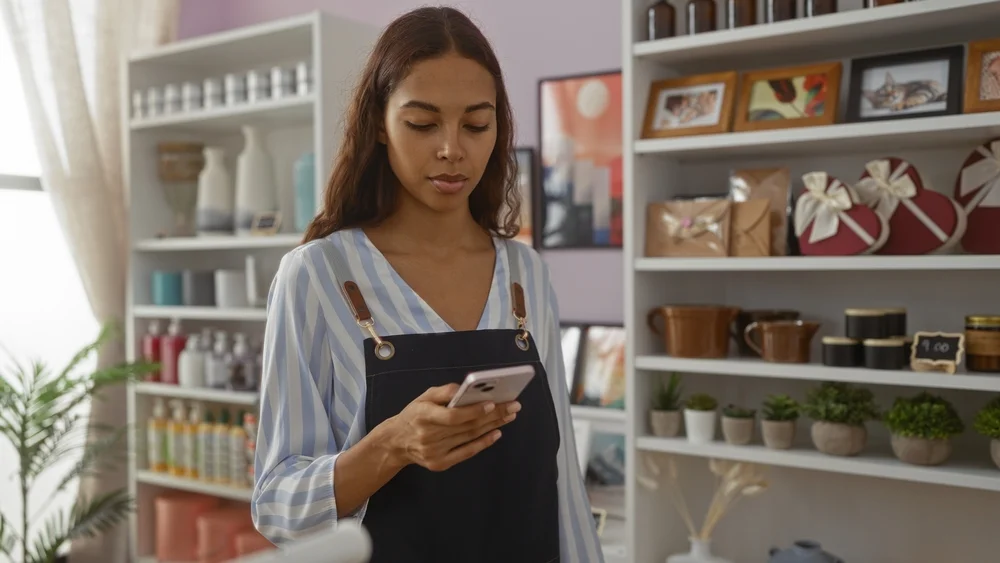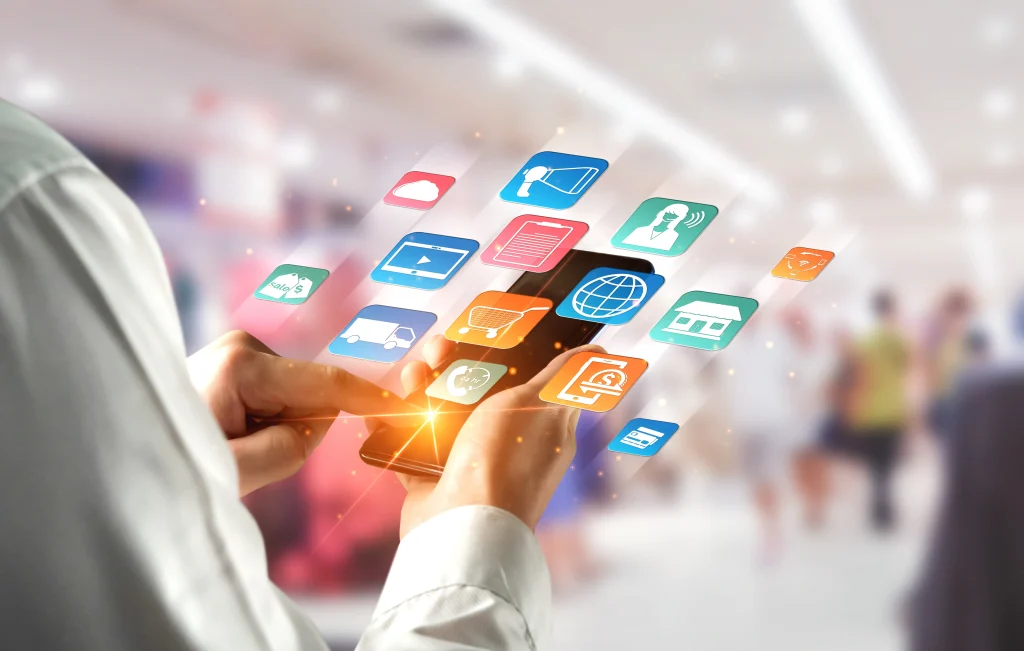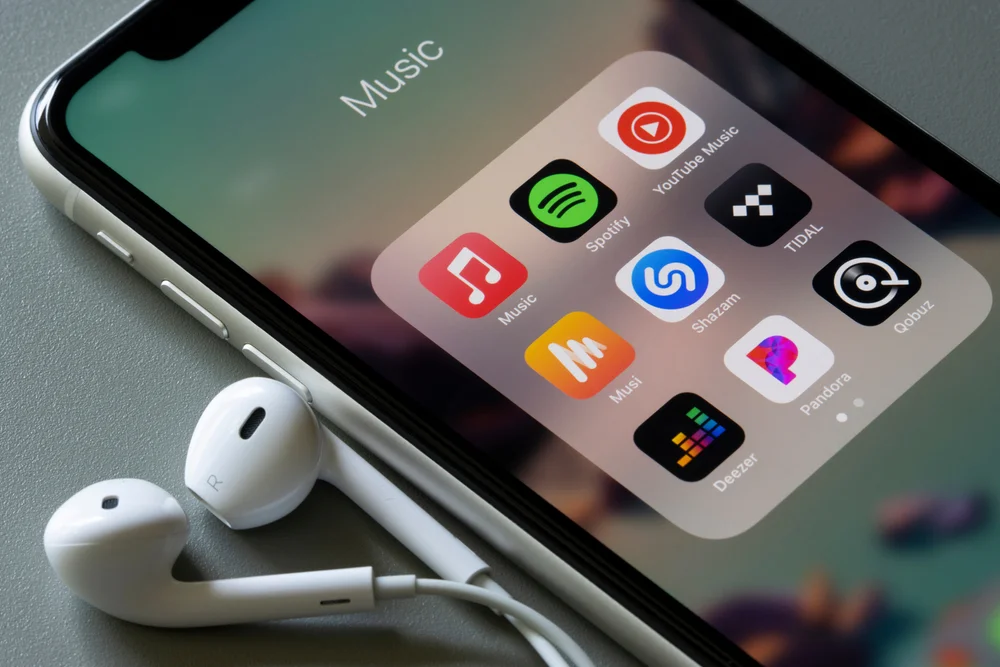Despite the rise of e-commerce, physical stores remain a strategic pillar for brands. In 2024, more than 70% of global sales were still made in-store, proving that the in-store marketing and experience remain essential to the consumer purchasing journey. However, faced with digitalisation and changing customer expectations, retailers must redouble their efforts to attract, engage and retain customers in-store.
Commercial animation is now an essential lever for boosting stores, driving traffic and maximising sales. Among the most innovative strategies, in-store playable marketing is emerging as a powerful driver of engagement.
How? By integrating gamification into the shopping experience.
In this article, we will decipher the importance of in-store marketing and explore how gamification can revolutionise the in-store experience to capture customers’ attention. And encourage them to buy and strengthen their loyalty.
What is in-store marketing?
In-store marketing refers to all promotional strategies and actions implemented directly within physical points of sale to influence consumer behaviour, increase footfall, stimulate sales and strengthen brand loyalty.
These actions may include product demonstrations, special offers, themed events or interactive experiences designed to enrich the customer journey.
To illustrate what in-store marketing is, here are two examples of campaigns run by retail brands.
- Asda and free sample vending machines: In February 2025, British supermarket chain Asda tested vending machines offering free product samples. The initiative aimed to increase sales of promoted products by up to 50% and improve the in-store customer experience.
- The Ordinary and its discounted egg sale: In March 2025, skincare brand The Ordinary organised an original marketing campaign by selling cartons of eggs for $3.37 in its New York stores. This initiative, in response to rising egg prices, attracted media attention and strengthened the brand’s image among consumers.
These examples illustrate how innovative in-store marketing campaigns can not only attract customers to the store, but also generate positive media coverage and strengthen brand awareness.
Why is sales promotion essential for a point of sale?
Despite the growth of online shopping, physical stores continue to play a crucial role in the retail landscape. For example, on the last Black Friday, 63% of consumers planned to shop both online and in-store, while 22% planned to shop exclusively online.
To capitalise on the appeal of retail, it is important to revitalise your points of sale, particularly by offering in-store promotions. Here is an overview of the objectives that brands can aim for by implementing this in-store gamification strategy.
1. Increase awareness and attract more traffic
In-store commercial entertainment boosts the visibility of a brand and its products, attracting a wider audience. By offering unique events, demonstrations or immersive experiences, brands can attract new customers. Playable in-store marketing also helps build audience loyalty by inviting them to discover new products or take part in an exclusive experience.
A study by Retail Dive shows that in-store events can increase in-store traffic by 30% to 40% during the event period.
During its festival, Autosphere promoted its car dealerships by organising an in-store instant win competition. The promotion offered a very attractive prize: a car. To enter, customers had to visit a dealership and qualify via the Check’in geolocation mechanism.
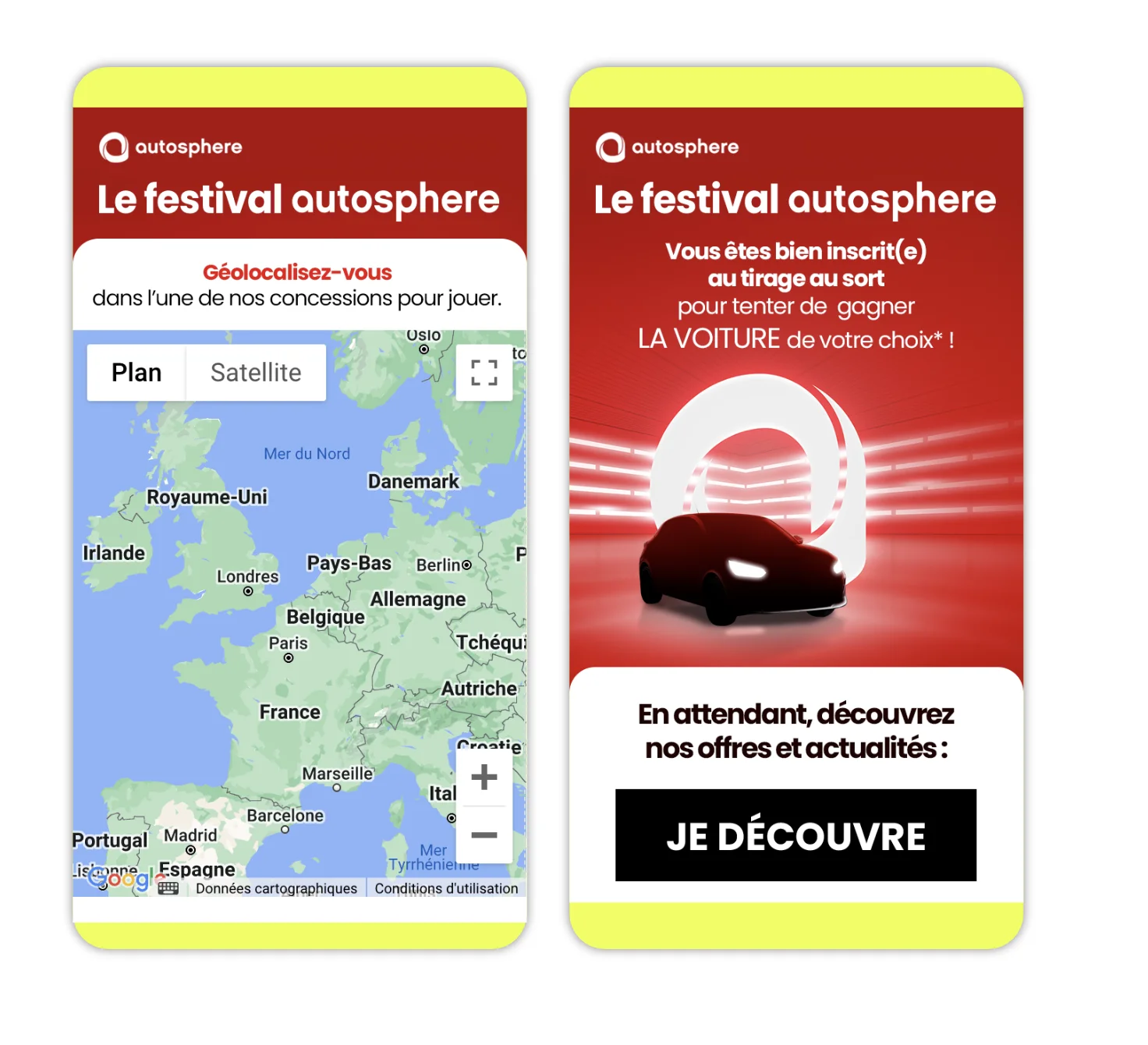
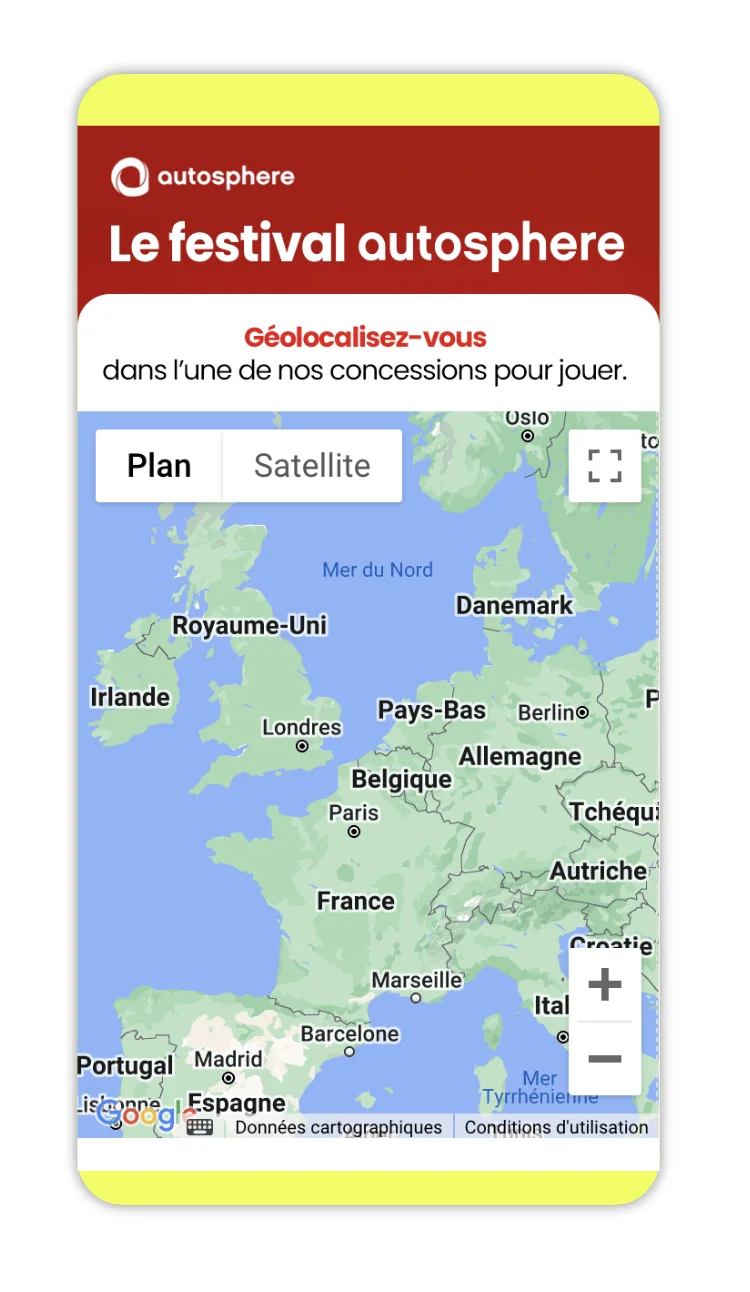
2. Improve the in-store experience and extend customer relationships
According to a PwC study, 73% of consumers say that the in-store customer experience has a significant impact on their purchasing decisions.
One example is Galeries Lafayette, which offered a 100% winning slot machine in six of its stores in France to liven things up during Mother’s Day. French Connection, a British fashion brand, offered free coffee in its stores in 2023 to encourage customers to spend more time in its shops. This initiative helped improve the customer experience by making the in-store visit more enjoyable and memorable.
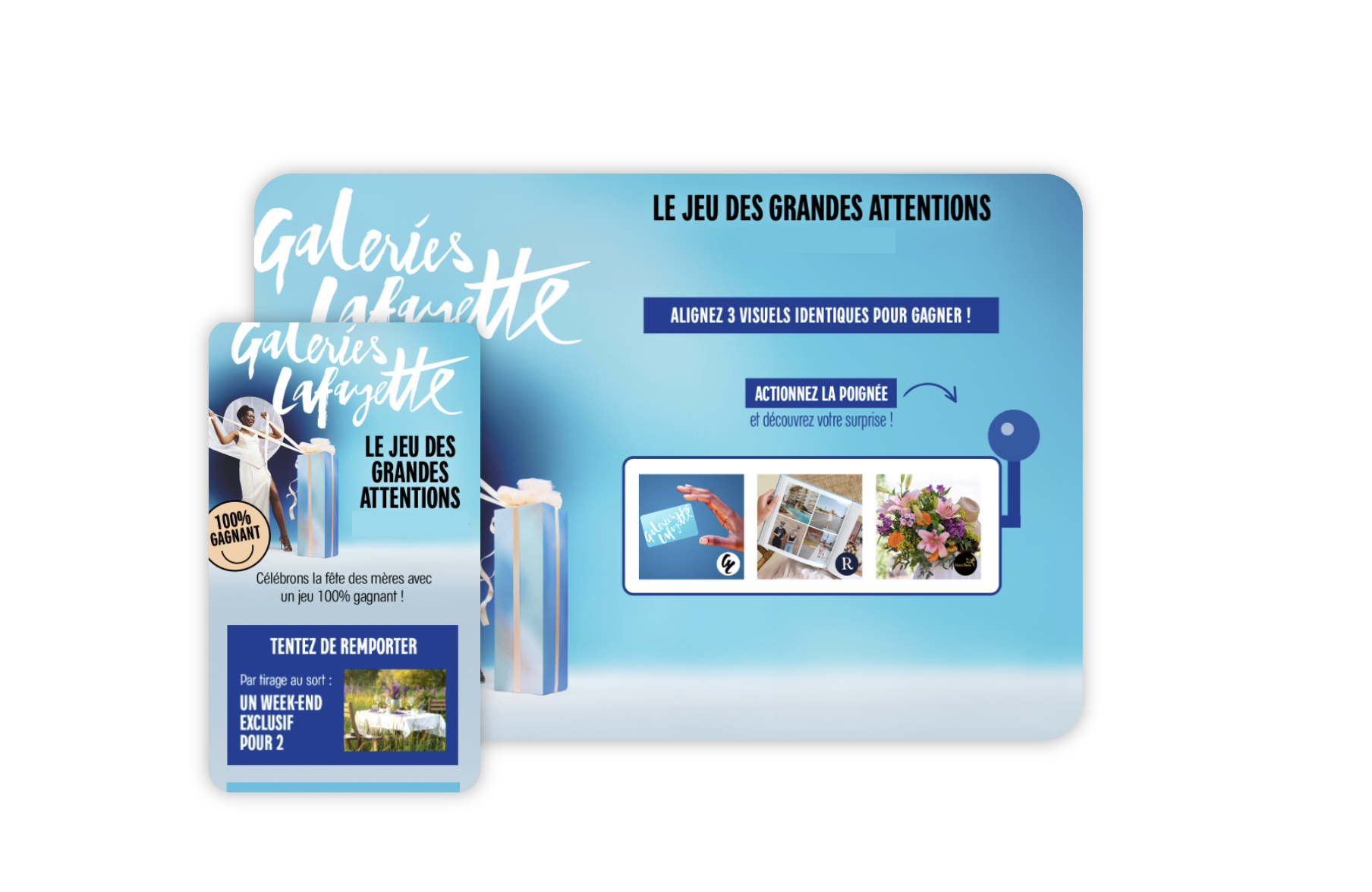
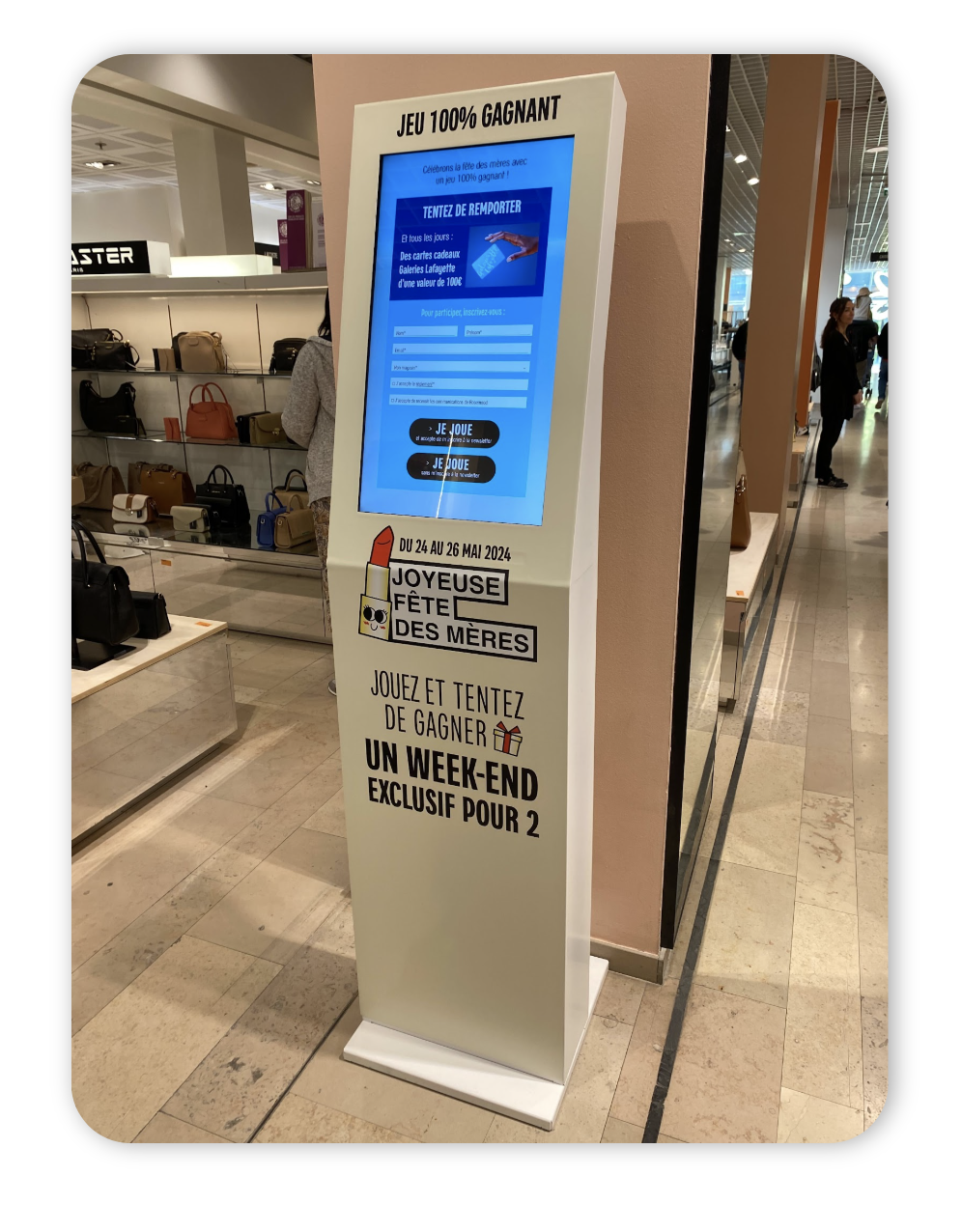
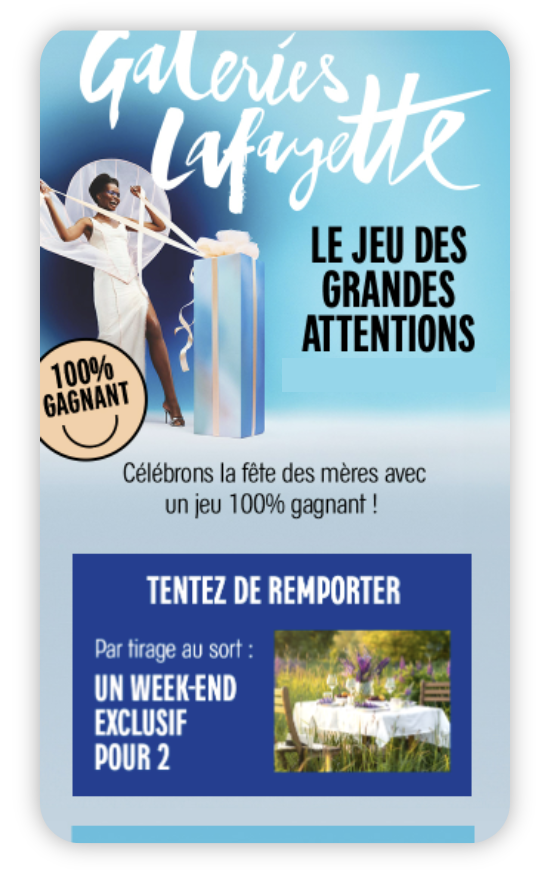
3. Collect data to better understand your audience
A Salesforce study shows that 63% of consumers expect brands to offer a personalised experience based on their preferences. In-store animation makes it possible to offer this level of personalisation in a physical environment.
Gamified in-store experiences are an excellent way to collect data on customer behaviour and preferences. Tools such as surveys (on a tablet at the checkout or an interactive terminal in-store) and Scan and Play animations enable brands to gather valuable information. They can then use this information to refine their in-store and online marketing strategy and gain a better understanding of their customers.
For example, L’Oréal used facial recognition technology combined with a survey mechanism in some of its stores. This initiative enabled the brand to collect data on its customers’ needs and preferences in order to offer them a personalised shopping experience. This information was used to tailor recommendations and improve customer relations both online and offline.
4. Boost in-store conversions
Effective in-store promotions can have a direct impact on sales. In fact, a study by ShopperTrak indicates that they can increase conversion rates by 30% to 50%. Real-time promotions, special offers or limited-time events create a sense of urgency and encourage immediate purchases. In addition, these promotions can also stimulate interest in specific products, thereby increasing the conversion rate.
When launching a new product, Apple organises in-store demonstrations and interactive workshops where customers can test products before purchasing. This strategy not only facilitates the purchasing decision, but also helps to speed up conversions.
5. Build loyalty and encourage repeat purchases in store
In-store marketing is also a powerful tool for building customer loyalty and encouraging repeat purchases. By offering exclusive promotions to existing customers or in-store loyalty programmes, brands can encourage their customers to return and spend more.
The fashion chain H&M regularly uses commercial animations to promote its loyalty programmes, offering rewards and in-store benefits. This strategy has enabled it to boost its retention rate and encourage repeat visits.
6. Build bridges between online and offline audiences (omnichannel strategy)
In-store marketing can also serve as a bridge between online and offline channels. This strategy pays off, as according to a study by Omnisend, brands that use an omnichannel approach increase their repurchase rate by 90% compared to those that settle for a one-dimensional strategy.
By integrating digital elements into sales promotions (for example, using QR codes to redirect customers to a mobile app), brands can connect physical interactions with their online platforms. This enables them to offer a seamless omnichannel experience.
Quick, for example, has successfully integrated its restaurant experience into its mobile app. The brand regularly organises interactive in-app games where users can earn points to spend on their next meal.
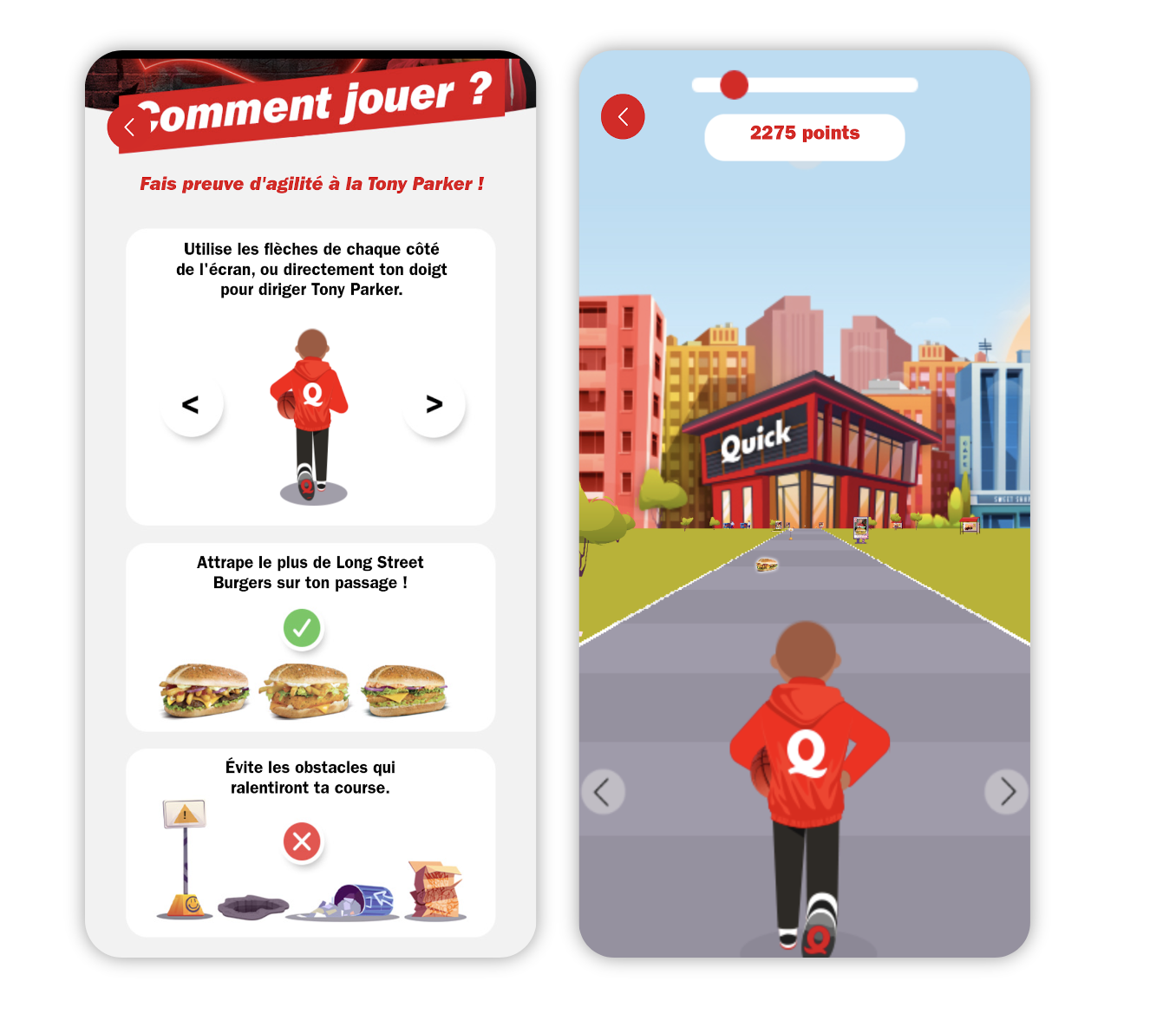
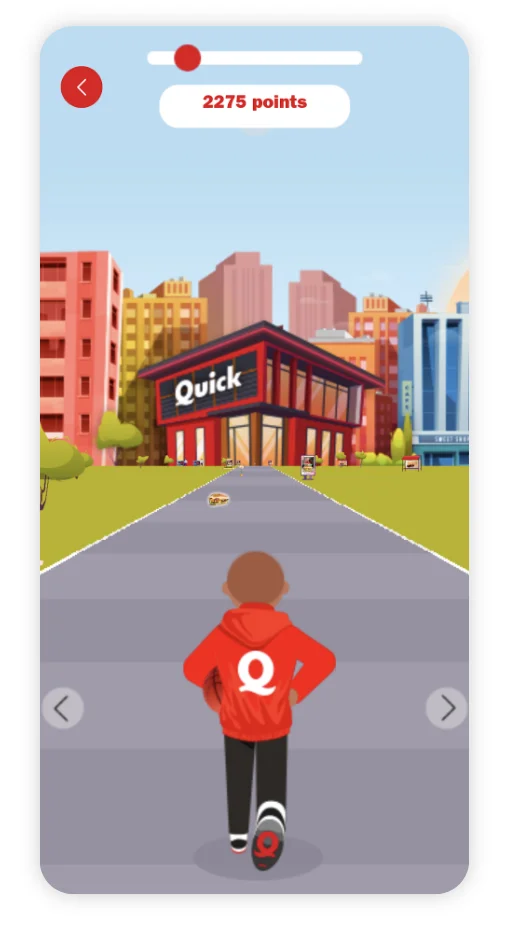
Examples of in-store marketing campaigns
Gamification in marketing allows you to implement various types of mechanics tailored to different in-store objectives. Here are some suggestions for games and activities to deploy in stores based on the main commercial contexts in retail.
1. Opening a shop
Business objective: boost brand awareness and attract customers to the new store
Recommended mechanics: Contest with proof of purchase
Organise a competition where customers participate by presenting proof of purchase made when the store opens. This mechanism immediately stimulates sales and draws attention to the new point of sale.
Implementation tips:
- Ensure that the rules of the game are clearly communicated and easily understood.
- Offer attractive rewards to encourage participation.
2. Launching a new product
Recommended mechanics: Interactive quiz
Offer an interactive in-store quiz that allows customers to test their knowledge of the new product. Participants can win free samples or discounts, encouraging product adoption while gathering valuable feedback.
Implementation tips:
- Ask engaging and informative questions about the product.
- Use visual and interactive media in-store to run the quiz and attract attention.
3. A Drive-to-Store campaign
Business objective: encourage online users to visit the store
Recommended mechanics: a geo-localised in-store competition
Encourage customers to visit the store by organising competitions that they can enter by scanning a QR code available only in-store. This strategy creates a direct link between the brand’s digital actions and its physical points of sale.
Implementation tips:
- Place QR codes in strategic locations to maximise visibility.
- Make the animation as accessible as possible by installing interactive terminals in stores and broadcasting it online to inform its audience. The brand will thus be able to reach an audience that is not necessarily comfortable with mobile devices.
4. Sales
Business objective: boost sales and maximize conversion rates.
Recommended mechanics: Instant wins.
Offer instant wins (Wheel of Fortune, One-armed Bandit, Scratch Card) where customers can find out immediately if they have won a reward when making a purchase during the sale. This approach creates a sense of excitement and encourages visitors to make a purchase.
Implementation tips:
- Integrate instant wins seamlessly into the shopping experience (via a QR code printed on the receipt, for example).
- Play on time constraints (by offering limited-time promotions and prizes) to encourage action and boost participation rates.
5. Key commercial periods (Christmas, Valentine’s Day)
Business objective: engage your community and re-engage your customers
Recommended mechanics: Winning calendar
Set up an advent calendar or countdown to the key date, where each day offers a new reward or promotion related to the purchase intention associated with the highlight (gifts, holiday shopping, etc.). This mechanism creates anticipation and encourages customers to return to the store regularly.
Implementation tips:
- Offer a variety of attractive deals to keep interest high throughout the period.
- Adapt point-of-sale advertising and in-store decorations to reinforce the festive atmosphere associated with the event.
6. The brand’s anniversary
Business objective: strengthen customer relationships and brand loyalty
Recommended mechanics: Scoring game
Organize a scoring game (such as Outrun) where customers accumulate points with each game. The highest scores can be rewarded, reinforcing engagement and celebrating the brand’s anniversary in a fun way.
Implementation tips:
- Offer attractive rewards for the best scores to encourage participation.
- Communicate regularly about rankings to maintain engagement throughout the period.
7. A VIP event
Business objective: reward its best customers and boost customer loyalty
Recommended mechanics: gamified loyalty program
Organize a contest where customers accumulate points when they make purchases or participate in in-store activities. Points can be exchanged for exclusive rewards, including invitations to VIP brand events.
Implementation tips:
- Offer exclusive, valuable rewards to encourage participation.
- Organize attractive VIP events for loyal customers (private sales, pre-launches, meetings with founders or influencers, etc.)
Our tips for a successful in-store playable marketing campaign
To move from theory to practice, here are a few tips to maximize the impact of your in-store marketing campaigns.
1. Defining your objectives
Before launching a Playable marketing campaign in-store, it is essential to define clear objectives: increase brand awareness, boost sales, or build customer loyalty? The objectives will guide the game mechanics to be used, whether it is a contest, a scoring game, or an instant win. Retailers must also take into account the specific characteristics of their point of sale (location, size) and the expectations of their target audience.
2. Create a fun gaming experience tailored to the in-store experience
3. Integrate in-store gaming into an omnichannel strategy
To maximize the impact of your in-store marketing, don’t limit your sales promotion to the physical experience. A drive-to-store or drive-to-web strategy could, for example, consist of offering rewards or benefits on your online channels to shoppers who visit your store, and vice versa. It may also be worthwhile to diversify your distribution formats (interactive terminals, tablets, QR codes, etc.).
4. Analyze KPIs and customer feedback to optimize your in-store marketing strategy
Conclusion
In-store gamification is a powerful tool for energizing your points of sale, attracting customers’ attention, and boosting your sales. By choosing the right gamification mechanics and integrating them into an omnichannel strategy, you can offer a unique and engaging experience to your audience. Boost your in-store marketing with Adictiz’s fun solutions and maximize your results!


